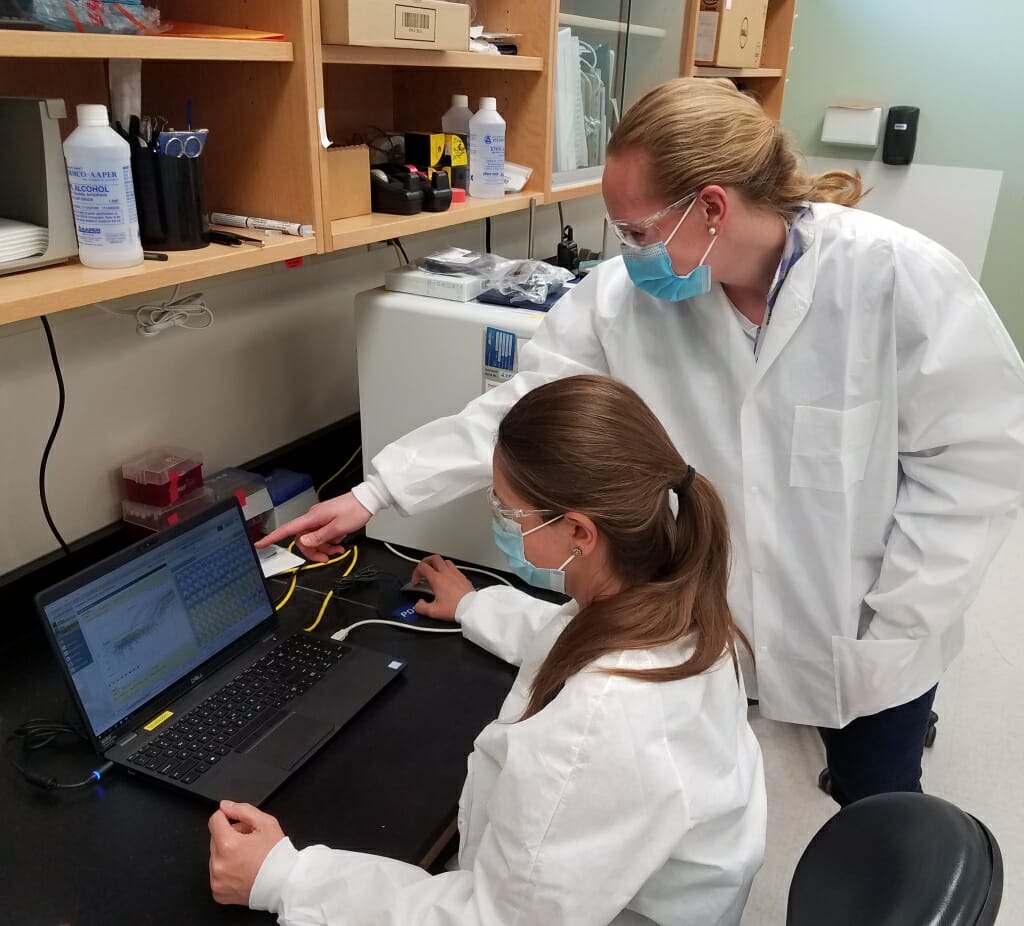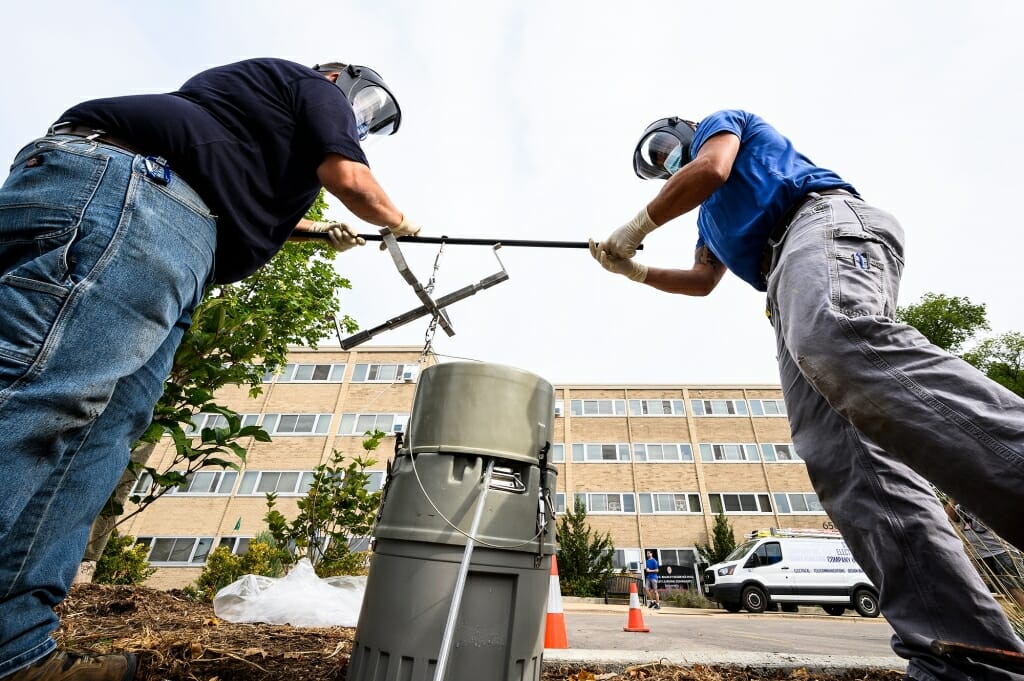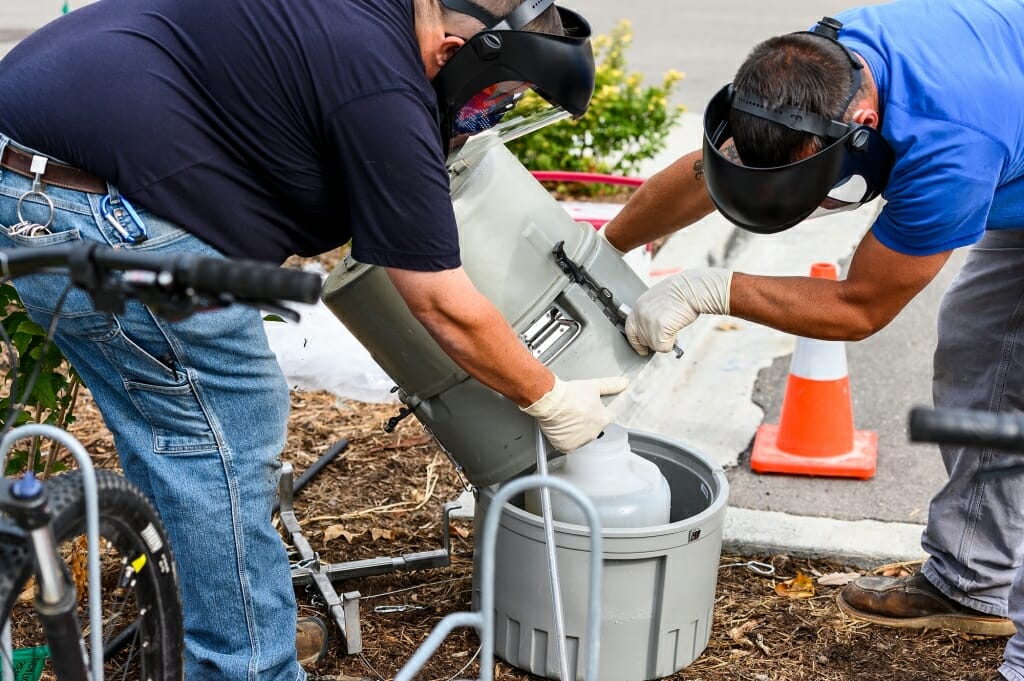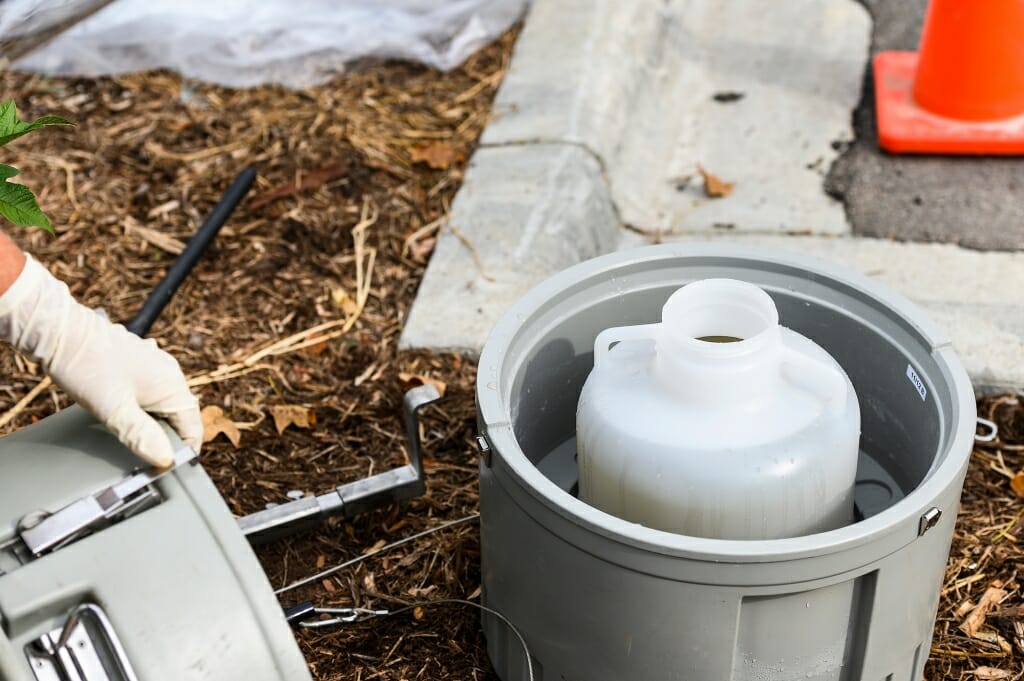Everybody poops, some shed the virus that causes COVID-19. Wisconsin’s wastewater surveillance is looking for it.
It’s like searching for a needle in a haystack. Except the haystack is human excrement. The needle, a tiny fragment of the tiny genetic material of a tiny virus that has, since December 2019, had a massive impact on the world.
Scientists at the Wisconsin State Laboratory of Hygiene, with collaborators at the University of Wisconsin-Milwaukee School of Freshwater Sciences, are sifting through raw sewage collected once or twice per week from nearly 100 wastewater treatment facilities statewide, and at the University of Wisconsin–Madison, in search of the genetic fingerprint of the virus that causes COVID-19, SARS-CoV-2.
Detecting and measuring how much virus there is may provide an early warning signal that cases of COVID-19 may soon rise and provide a readout of how levels of virus change in a population over time. It could give hospitals time to prepare for an increase in patients.
At UW–Madison, wastewater surveillance also provides an opportunity to target campus testing (UW–Madison is offering no-cost testing for all students and employees), isolation and quarantine, and limit disease spread.
This is especially important since the virus can transmit from person-to-person before symptoms begin, and some people with the virus never develop symptoms at all.
“We picked this up in late March and said this is really something we should be doing,” says Martin Shafer, a scientist at the WSLH and the UW–Madison College of Engineering. “We put a proposal into the (Wisconsin) Department of Health Services, and it was funded … It’s the largest in terms of the number of wastewater facilities in the country.”
That funding, a collaboration between WSLH, UW–Milwaukee, DHS and the Wisconsin Department of Natural Resources, amounts to $1.25 million. The WSLH group, which includes scientists Jocelyn Hemming, Dagmara Antkiewicz and Kayley Janssen, also received a boost thanks to $10,000 in UW/WARF COVID-19 Accelerator Challenge funding to improve wastewater surveillance methods for SARS-CoV-2.

Dagmara Antkiewicz (seated) and Kayley Janssen examine results of molecular PCR tests of wastewater samples. Photo courtesy Wisconsin State Laboratory of Hygiene
For two decades, researchers around the world have applied the concept of wastewater-based epidemiology to address public health issues, such as rates and distribution of opioid use. Collecting wastewater for surveillance is not new.
For instance, Shafer explains that each day, the DNR requires wastewater treatment facilities to collect a sample representing 24-hour’s-worth of sewage that feeds into each plant. This allows the state to monitor concentrations of phosphorus and nitrogen, which can cause outbreaks of toxic algae in Wisconsin’s freshwater.
“You can’t just stick a bottle into a wastewater stream and pull up a sample,” says Shafer. “Your sample varies with time and one has to capture that variability.”
For COVID-19 surveillance, gathering samples of wastewater involves a piece of equipment that periodically pulls it into a large container throughout the day. Samples from these 24-hour composites of sewage are then transported back to the lab for analysis.
What arrives, Shafer says, is a relatively mixed solution of liquids and solids. There is no evidence that wastewater contains active, infectious virus, or that exposure to sewage can lead to transmission of COVID-19. What the scientists are looking for is essentially a fingerprint of the SARS-CoV-2 virus — small pieces of its genetic material called RNA.
To search for it, scientists run the liquid-solid mixture through a filter designed to catch viral particles and fragments based on their electric charge, similar to collecting iron filings with a magnet. Then, they mash up the filter and whatever is stuck to it and collect the RNA.
From there, they run a test called quantitative PCR, which relies on chemicals called primers and probes to search for and bind to the RNA specific to the SARS-CoV-2 virus. This provides a measure of how much of the virus is present in the wastewater samples and can provide a sense for how the virus’s prevalence might be changing over time.
For example, concentrations of the virus have decreased in Madison’s sewage since additional protective measures such as a mask mandate were implemented over the summer, Shafer says, but the team is poised to monitor for a resurgence should transmission pick up again.
The statewide wastewater SARS-CoV-2 monitoring program covers facilities in all but five of Wisconsin’s 72 counties, including four tribal facilities, representing 60 percent of the state’s population and offering statewide geographic coverage. The smallest facilities represent populations of at least 1,500 people. The largest facility, in Milwaukee, covers one million.
“When the pandemic began to emerge early this year, many of us doing research in environmental microbiology saw an opportunity to contribute population level information by sampling sewage,” says Sandra McLellan, UW–Milwaukee professor of freshwater sciences.“ We began collecting samples in Milwaukee mid-March and shortly thereafter began receiving samples from Racine and Green Bay. That gives us a great record of how the pandemic unfolded in some of Wisconsin’s largest cities.”
McLellan is leading a team to effectively translate wastewater SARS-CoV-2 data to public health entities and, with the WSLH, participates in an international effort evaluating wastewater surveillance as a strategy for understanding COVID-19. Shafer says the Centers for Disease Control and Prevention will soon announce the creation of a nationwide network and the Wisconsin teams will be among the founding members.
Since July, UW–Madison began funding its own surveillance program in conjunction with the WSLH, managed by Facilities Planning and Management. Samples are drawn twice weekly from sewers on Elm Drive and on Easterday Lane, offering a broad survey of employees and students, including those in residence halls. Collecting the sewage involves pulling directly from the wastewater supply, rather than from what flows into a large treatment facility.
“Samples on campus can be from within minutes of production so they are a bit messier,” Shafer says, unafraid to get right down to it.
But, he says, “we do it for the good of science and public health.”
Tags: covid-19, health & medicine, outreach







